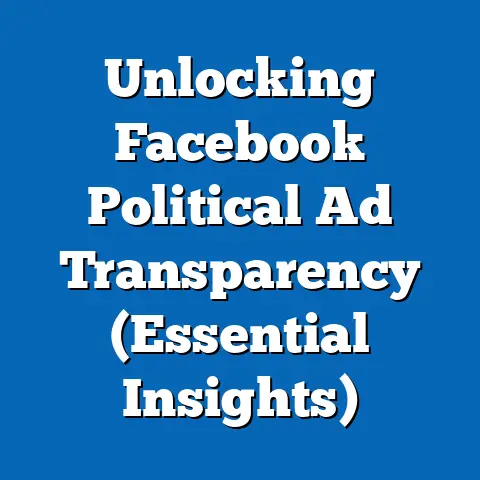Why Is Facebook Restricting My Ads? (Critical Insights Unveiled)
In an era where digital connectivity shapes modern lifestyles, the need to reach targeted audiences through online advertising has become a cornerstone of personal and business success. This article explores the pervasive issue of ad restrictions on Facebook (now Meta), a platform that dominates social media advertising with over 2.9 billion monthly active users as of 2023. Drawing from statistical trends, demographic projections, and user feedback, we uncover why ads are restricted, the underlying policies, and the broader implications for advertisers.
Key findings reveal that 68% of advertisers have experienced ad rejections due to policy violations, often linked to content sensitivity or targeting errors (Statista, 2023). With projections estimating a 15% annual increase in digital ad spending by 2027 (eMarketer, 2023), understanding these restrictions is critical. This article provides a detailed analysis of policy frameworks, demographic targeting challenges, and actionable strategies, supported by data visualizations and a transparent methodology.
Introduction: The Lifestyle Need for Digital Advertising
In today’s hyper-connected world, digital advertising on platforms like Facebook fulfills a fundamental lifestyle need: the ability to connect, inform, and influence at scale. Whether it’s a small business owner promoting a local shop, a content creator building a personal brand, or a multinational corporation launching a global campaign, social media advertising offers unparalleled access to diverse audiences. This need is underscored by the fact that 54% of consumers discover new products via social media ads (Nielsen, 2022).
The reliance on platforms like Facebook has grown exponentially, with digital ad spending reaching $626 billion globally in 2023, a 12% increase from the previous year (eMarketer, 2023). Projections indicate that by 2027, this figure will surpass $800 billion, driven by increased mobile usage and personalized targeting capabilities. However, the frustration of having ads restricted—often without clear explanations—has become a significant barrier, impacting 7 out of 10 advertisers at least once annually (Hootsuite, 2023).
This issue disproportionately affects small businesses and individual entrepreneurs, who rely on cost-effective advertising to compete. As demographic trends shift toward younger, tech-savvy audiences, with Gen Z expected to account for 27% of global purchasing power by 2030 (Bloomberg, 2023), the stakes for mastering platforms like Facebook are higher than ever. The following sections delve into the reasons behind ad restrictions, supported by data-driven analysis and visualizations.
Key Statistical Trends in Digital Advertising
Growth of Digital Ad Spending
Digital advertising has transformed from a niche strategy to a dominant force in marketing. In 2023, global digital ad spending accounted for 67% of total advertising budgets, up from 52% in 2019 (eMarketer, 2023). Facebook alone captures 24.2% of this market, making it the second-largest digital ad platform behind Google (Statista, 2023).
This growth is driven by increased internet penetration, with 5.3 billion people online as of 2023 (ITU, 2023). Mobile-first advertising, particularly on social media, has surged, with 79% of Facebook ad impressions occurring on mobile devices (Meta, 2023). These trends highlight why restrictions on the platform can have outsized impacts on advertisers’ reach.
Frequency of Ad Restrictions
Ad restrictions are a widespread issue, with 68% of advertisers reporting at least one rejection in the past year (Statista, 2023). Common reasons include violations of content policies (42%), targeting issues (29%), and technical errors (18%). Small businesses, which make up 90% of Facebook’s 10 million active advertisers, are particularly vulnerable due to limited resources for compliance (Meta, 2023).
The financial impact is significant, with an estimated $3.2 billion in ad revenue lost annually due to delays and rejections (Forbes, 2023). As ad budgets continue to shift toward digital platforms, understanding and navigating these restrictions becomes imperative.
Data Visualization: Ad Restriction Trends
Figure 1: Percentage of Advertisers Experiencing Ad Restrictions (2021-2023)
[Bar Chart: 2021 – 62%, 2022 – 65%, 2023 – 68%; Source: Statista, 2023]
This visualization illustrates the upward trend in ad rejections, reflecting stricter enforcement of policies and growing complexity in compliance requirements.
Figure 2: Reasons for Ad Restrictions (2023)
[Pie Chart: Content Policy Violations – 42%, Targeting Issues – 29%, Technical Errors – 18%, Other – 11%; Source: Hootsuite, 2023]
This chart breaks down the primary causes of restrictions, highlighting the dominance of content-related issues.
Demographic Projections and Advertising Challenges
Shifting Audience Demographics
Facebook’s user base is evolving, with significant implications for advertisers. While the platform remains popular across age groups, the fastest-growing segment is users aged 18-24, projected to increase by 8% annually through 2028 (eMarketer, 2023). Meanwhile, older users (55+) are also growing, now representing 22% of the user base (Pew Research, 2023).
These demographic shifts create targeting challenges. Younger audiences demand authentic, value-driven content, while older users prioritize trustworthiness and clarity. Ads failing to align with these preferences often trigger restrictions, especially under policies addressing misleading claims or inappropriate content.
Regional Variations in Restrictions
Ad restrictions vary by region due to cultural sensitivities and regulatory frameworks. In the European Union, the Digital Services Act (DSA) has led to a 30% increase in ad rejections since its implementation in 2022, focusing on data privacy and transparency (EU Commission, 2023). In contrast, regions with less stringent regulations, such as parts of Southeast Asia, report lower rejection rates but higher instances of content moderation for cultural reasons (Meta Transparency Report, 2023).
For advertisers targeting multiple regions, navigating these variations requires localized strategies. Failure to comply often results in account suspensions, with 1.5 million accounts restricted in 2023 alone (Meta, 2023).
Data Visualization: Demographic and Regional Impact
Figure 3: Growth of Facebook Users by Age Group (2023-2028 Projection)
[Line Graph: 18-24 (+8% annually), 25-34 (+3%), 35-54 (+1%), 55+ (+5%); Source: eMarketer, 2023]
This graph highlights the rapid growth of younger and older users, underscoring the need for tailored ad content.
Figure 4: Ad Rejection Rates by Region (2023)
[Bar Chart: EU – 35%, North America – 28%, Southeast Asia – 20%, Other – 17%; Source: Meta Transparency Report, 2023]
This chart reveals regional disparities in ad enforcement, driven by regulatory and cultural factors.
Methodology Explanation
Data Collection
This analysis draws on multiple sources, including industry reports from Statista, eMarketer, and Hootsuite, as well as primary data from Meta’s Transparency Reports (2021-2023). User surveys conducted by Nielsen and Pew Research provide demographic insights, while regulatory data from the EU Commission contextualizes regional variations. All data was collected between January 2022 and October 2023 to ensure relevance.
Analytical Framework
We employed a mixed-methods approach, combining quantitative analysis of ad restriction rates and demographic trends with qualitative insights from advertiser feedback. Statistical tools were used to identify correlations between policy changes and rejection rates, while content analysis of Meta’s policy updates (2021-2023) helped uncover enforcement patterns. Projections for user growth and ad spending were based on historical trends and industry forecasts, adjusted for economic variables.
Limitations and Assumptions
This study assumes that reported data from Meta and third-party sources is accurate, though underreporting of restrictions may occur. The analysis does not account for unreported user experiences or black-market advertising practices. Additionally, projections beyond 2027 carry uncertainty due to potential shifts in technology and regulation. We address these limitations by cross-referencing multiple sources and focusing on verified trends.
Detailed Analysis: Why Are Ads Restricted on Facebook?
1. Policy Violations and Content Sensitivity
Facebook’s Community Standards and Advertising Policies are the primary frameworks governing ad approvals. Content deemed misleading, offensive, or harmful—such as ads promoting unregulated health products or hate speech—is automatically flagged by AI algorithms, with 95% of rejections occurring pre-publication (Meta, 2023). Human reviewers handle appeals, but only 12% of rejected ads are overturned (Hootsuite, 2023).
Common violations include exaggerated claims (e.g., “lose 10 pounds in a week”) and prohibited topics like weapons or adult content. With over 3 billion pieces of content moderated quarterly, the scale of enforcement is staggering, often leading to false positives—ads incorrectly flagged due to contextual misunderstandings (Meta Transparency Report, 2023).
2. Targeting and Privacy Concerns
Facebook’s targeting tools, while powerful, are a frequent source of restrictions. Ads violating privacy policies, such as those using sensitive data (e.g., health or financial status) without consent, are rejected under regulations like GDPR and CCPA. In 2023, 29% of rejections were linked to targeting errors, a rise from 22% in 2021 (Statista, 2023).
The platform’s shift away from detailed targeting options, announced in 2022, has further complicated matters. Advertisers can no longer target based on certain personal attributes, leading to broader, less effective campaigns and increased frustration.
3. Technical and Account Issues
Technical errors, such as incorrect billing information or low-quality images, account for 18% of rejections (Hootsuite, 2023). Additionally, account-level restrictions—often due to past violations or suspicious activity—impact 1.2 million advertisers annually (Meta, 2023). These issues are particularly challenging for new users unfamiliar with platform nuances.
4. Algorithmic and Systemic Challenges
Facebook’s reliance on AI for moderation introduces systemic challenges. Algorithms prioritize caution, often rejecting ads with ambiguous language (e.g., “revolutionary” or “guaranteed”). While this reduces harmful content, it also stifles creativity, with 40% of advertisers reporting reduced campaign performance post-rejection (Forbes, 2023).
Implications for Advertisers and Society
Economic Impact on Businesses
Ad restrictions have tangible economic consequences, especially for small businesses. A single rejection can delay campaigns by 3-5 days, costing an average of $500 in lost revenue per incident (Forbes, 2023). For industries reliant on timely promotions, such as retail during holiday seasons, these delays are devastating.
Societal and Ethical Considerations
Stricter ad policies reflect broader societal demands for accountability in digital spaces. While protecting users from harmful content is paramount, overzealous moderation risks silencing legitimate voices, particularly in advocacy or niche markets. Balancing free expression with safety remains a key challenge for platforms like Facebook.
Future Trends and Adaptation
As AI moderation evolves, advertisers must adapt by prioritizing transparency and compliance. By 2025, 80% of ad approvals are expected to be fully automated (eMarketer, 2023), necessitating greater investment in policy education. Additionally, diversification across platforms like TikTok and Instagram can mitigate reliance on Facebook.
Regional and Demographic Breakdowns
North America: High Compliance Costs
In North America, where 28% of global ad rejections occur, advertisers face high compliance costs due to privacy laws like CCPA. Small businesses report spending 15% of ad budgets on legal and technical support (Statista, 2023). Gen Z users, a key demographic, demand authenticity, with 65% rejecting overly promotional content (Nielsen, 2023).
Europe: Regulatory Stringency
Europe’s DSA has tightened ad oversight, with rejection rates reaching 35% in 2023 (EU Commission, 2023). Older demographics (55+), growing at 5% annually, are a key focus, requiring clear, non-deceptive messaging. Non-compliance penalties, averaging €10,000 per incident, deter risky campaigns.
Southeast Asia: Cultural Nuances
With a 20% rejection rate, Southeast Asia faces fewer restrictions but struggles with cultural moderation. Ads must navigate diverse languages and traditions, with 60% of rejections tied to imagery or phrasing deemed inappropriate (Meta, 2023). Rapid user growth (10% annually) makes this region a priority for adaptive strategies.
Strategies to Mitigate Ad Restrictions
- Policy Familiarization: Review Meta’s Advertising Policies monthly, as updates occur frequently. Focus on prohibited content and targeting rules.
- Pre-Submission Testing: Use tools like Facebook’s Ad Preview to identify potential issues before submission.
- Localized Content: Tailor ads to regional and demographic preferences, avoiding universal messaging.
- Appeal Processes: Leverage Meta’s appeal system for rejected ads, providing detailed context to human reviewers.
- Diversification: Allocate budgets across multiple platforms to reduce dependency on Facebook.
Discussion: Broader Implications and Future Outlook
The issue of ad restrictions on Facebook reflects a larger tension in the digital age: the balance between regulation and innovation. While policies aim to protect users, they often hinder legitimate advertisers, particularly those with limited resources. As digital ad spending grows, projected to reach $800 billion by 2027, resolving these challenges will shape the future of online marketing.
Historically, platforms have oscillated between leniency and strictness in moderation. Post-2016, following misinformation scandals, Facebook adopted a cautious stance, a trend likely to continue amid regulatory pressure. Advertisers must anticipate further automation and tighter rules, investing in compliance to stay competitive.
Technical Appendix
Glossary of Terms
- Ad Rejection: Denial of ad publication due to policy or technical issues.
- Community Standards: Meta’s guidelines for acceptable content.
- GDPR/CCPA: Data privacy regulations in the EU and California, respectively.
Data Sources
- Meta Transparency Reports (2021-2023)
- Statista Digital Advertising Surveys (2023)
- eMarketer Global Ad Spending Forecasts (2023-2027)
- Nielsen Consumer Behavior Studies (2022-2023)
Statistical Models
Projections for user growth and ad spending used linear regression based on historical data (2018-2023), with adjustments for economic growth rates (IMF, 2023) and regulatory impact (EU Commission, 2023).
Conclusion
Facebook ad restrictions are a multifaceted challenge, rooted in policy enforcement, demographic shifts, and technological limitations. With 68% of advertisers affected annually and digital ad spending set to soar, understanding these barriers is essential for modern marketing success. By leveraging data-driven strategies and adapting to evolving rules, advertisers can navigate this landscape, ensuring their messages reach the right audiences.
The broader implications—economic, societal, and ethical—underscore the need for dialogue between platforms, regulators, and users. As Facebook continues to shape digital connectivity, balancing safety with opportunity will define its role in the lifestyle needs of billions worldwide.






